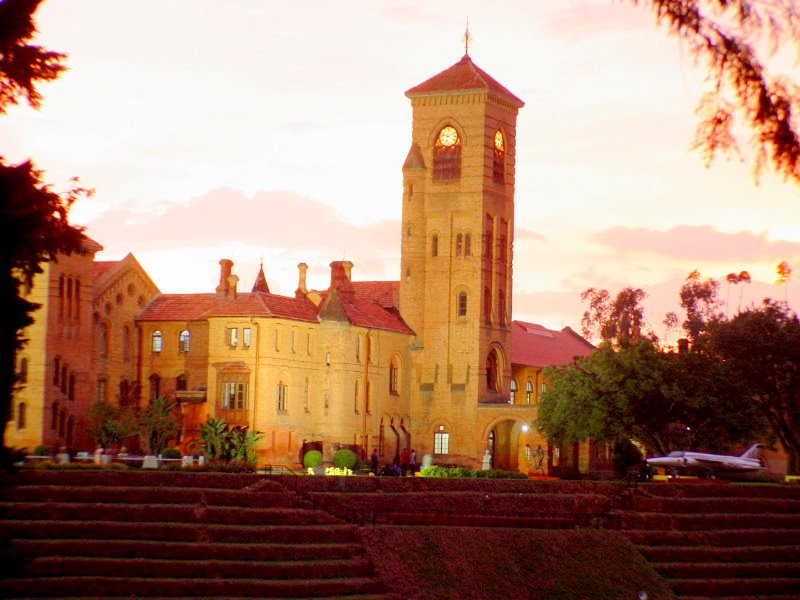SIR HENRY LAWRENCE
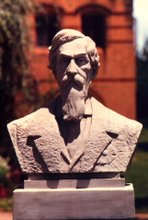
Henry Lawrence wanted to establish a chain of schools with a view to provide education to the children of the deceased and serving soldiers and officers of the British army. Lawrence was himself killed in the Indian rebellion of 1857, also called India’s First War of Independence. His dream took shape and four such schools, initially known as Lawrence Military Asylum, were established in different parts of India: the first two during his lifetime in the year 1847 at Sanawar and the second at Mount Abu in 1856; the third at Lovedale, near Ootacamund on 6 September 1858, and the fourth in Ghora Gali (near Murree, now in Pakistan) in 1860.
SCHOOL CREST
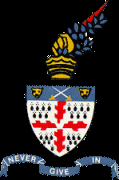
MOTTO NEVER GIVE IN'----The motto of the school is "NEVER GIVE IN" as visible in the school emblem. The motto embodies the spirit of the Lawrencian – to pursue a task to its fullest , giving one’s best at all times. The motto is believed to instill in the pupils the spirit of excellence and the tenacity to overcome obstacles and blocks to achieve one’s goals.
SIR HENRY LAWRENCE AND THE KINGS COLOUR
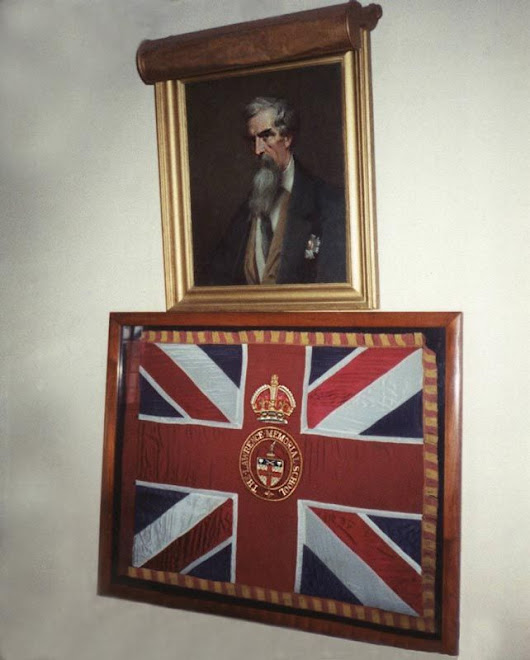
Thursday, October 1, 2009
Wednesday, September 16, 2009
PREM RAO
Prem Rao

Management Consultant & Executive Coach based in Bangalore, India
Alumnus of Lawrence School, Lovedale, Loyola College, Chennai & XLRI, Jamshedpur ('74)
First generation entrepreneur.
Founded People 1st Consulting in 2000.
Working with people for 34 years...and still learning!
Contact: bprao AT people1stconsulting
Her Schooling
She did her schooling at the Lawrence School in Lovedale, Ooty.
She did her graduation with a Bachelor in Hotel Management (BHM) Degree from the Welcomgroup Graduate School of Hotel Administration (WGHSA) at the Manipal University in Manipal, Karnataka, India in 2008. She is excelled not only in academics but also in co-curricular activities, and sports. Vice Principal of WGSHA, Dr. Kulmohan Singh says' "Kishore had constantly ranked amongst the 20 best students of the class."
Gul Panag (January 3, 1979 ; Chandigarh, India) is a critically acclaimed Bollywood actress and former beauty queen who has competed in the Miss Universe pageant. Her notable films are Dhoop , Dor and Manorama Six Feet Under.
Gul Panag hails from an Army background.Her father Lieutenant General H S Panag, is in the Indian Army and is at present Army Commander, Central Command. She has a younger brother , Sherbir Singh who is a nationally ranked Skeet shooter and is at present studying at her Alma Mater, The Lawrence School Lovedale.
IN LOVING MEMORY
Hari, who passed away yesterday, is third from right on the top row while the greivously injured Fazal is fourth from the right i.e. he stands right next to Hari. Pranav Singal, whose condition was also stated to be critical is fourth from the left on the same row. Esha, who also passed away is the fourth girl from the right in the middle row.
May the departed rest in peace. And I hope the rest get better soon.
-Samuel Johnson
This piece is about two people- Esha and Hari, people who played a role in quite a major part of my life, in more ways than one, and whose sudden demise has left a huge gap that will obviously take a long time to fill. I came to know both of them around eleven years back, when we met at The Lawrence School, Lovedale. In Prep School i.e. from classes 4-6, all three of us were in the same section and also in the same house. Over the next three years, I got to see these two grow into two fine people; people who knew how to stand up for themselves at an age that people don’t usually associate with maturity. With this, they lived up to the tag of being Lawrencians. While Esha was the only girl prefect of our house, Hari was one of the three boy prefects. Esha’s leadership skills were at a level that could only be matched by a handful of her peers, arguably the more illustrious ones. Hari wasn’t exactly what you would call a born leader and what made him stand out was his controlled aggression, something because of which he was able to exercise adequate authority as a prefect. Even my father remembers that he was the one who gave them their stripes as he had chaired the swearing in ceremony for the Prep School prefects for our batch.
Esha and Hari were what one would call diametric opposites. Esha was someone who loved to express herself. This, she did through activities like debates, music, drama and art. She was very good at playing the piano and also has a certificate given by the Trinity College, London for this very hobby. She was an avid reader and was always with me as part of the house quiz and literary teams in Prep School. Hari, on the other hand, found his calling in sport. He excelled in almost every game he played as he captained the house in all sports while he was in Prep School. He was particularly good in basketball and cricket. When I met him last i.e. three years ago, he was training hard to get into the Tamilnadu state basketball team. Only when my house changed in Junior School i.e. classes 7-8, did I come to know why they were among the most respected opponents in their respective fields- it was because of the sheer effortlessness with which they went about doing whatever they were supposed to be doing.
There was this instance in early class 8, just before we had shifted to Junior School, when we had the Inter-house Mathematics Quiz in Prep School and I somehow made it to the house team despite my curious love-hate relationship with the subject. Esha was also with me on the team which consisted of four members. The last round of the quiz required a single member of the team to answer a set of questions without any help. As my knowledge of the subject was rather limited, the team had decided on sending Esha to the hot-seat. However, a person sitting in the audience was the one whose decision was finally counted. It was Hari. He wanted me to represent the house team in that round. Though we came second in that quiz, our house managed to get the highest points in that particular round. I later came to know that Hari had planned this move and had taken Esha into confidence long before the quiz had even begun! This display of confidence made me overlook the fact that our house had lost the first position in a quiz after a really long time.
Esha was someone who was always an integral part of my life. It is a pity that our closeness was later affected by barriers like distance and lack of regular communication after I left Lawrence. We tried everything to stay in touch but nothing seemed to work. In fact it was her who got me on to Facebook in the first place. Misunderstandings also played their part and we were reduced to just being civil to each other. My personal equation with her is something which I don’t wish to comment about right now as it certainly deserves more space. I can’t say that I was in touch with Hari either. I just met him once after leaving Lawrence and all that made us stay connected was Facebook. How much would they have changed in all these years? Did I lose the same Esha and Hari who were in my life for a considerable amount of time? These are questions to which I don’t think I can find answers, no matter how hard I try.
I am still in a state of shock, something which I don’t think I can get rid of anytime soon. All I know is that I shall pull through, eventually. I sincerely hope that the souls of the departed rest in peace and meet us in the afterlife or whatever people call it, and take us on a journey filled with memories, memories that are lost for lesser mortals like us, at least for now.
Tuesday, September 15, 2009
Tuesday, September 8, 2009
DEDICATION TO A BOY CALLED Alyosha
Alyosha Kumar, was born on 10th December 1984 during the freezing winter, in the far eastern Russian Port of Vladivostok, where his father, then Lt Cdr Arun Kumar, Indian Navy (later retired as a Commodore) was posted, undergoing Nuclear Submarine Training. Ever since his birth, it was apparent that Alyosha was a special child, exceptionally gifted. Throughout his primary and secondary schooling at Naval Public Schools, Lawrence School, Lovedale and later Modern School, Barakhamba Road, New Delhi, he excelled in academics and sports with equal ease. He appeared for SATS in 2001 and obtained a score of 1500, which was exceptional by any means. For his higher studies, he opted to go in for humanities and joined the National Law School of India University, Bangalore (No. 1 Law School in India), in June 2002, standing 9th in order of merit all India, in the entrance exam. He completed his graduation from NLSIU in end Sept 2007 and had already been appointed as a junior lawyer, by a reputed Law firm Wadia & Gandhi in Mumbai where he was to join on 16th Oct 2007. Destiny, unfortunately, snatched him from us in very unfortunate and tragic circumstances. In the wee hours of 30th Sept 2007 at Bangalore, he was brutally and fatally stabbed to death in a senseless frenzy of violence, none of his making. Alyosha was a very intelligent, compassionate and humane person, who always expressed his views with conviction and without fear or favour. He would stick his neck out to fight injustice and would often say“I cannot stay quiet in the face of injustice”. It may not be coincidental that he was born on Human Rights Day. During his stay at the Law School, he was funding the education (out of his pocket allowance) for the granddaughter of a lady (Amma as he would call her) vending tea outside his college premises. He had also desired to, later in his life, work in the field of micro financing for upliftment and empowerment of the poor. Wealth accumulation and materialistic values for personal comfort had no attraction for him. His parents and well wishers, in pursuance of Alyosha’ desire, have set-up a public charitable trust, “The Brave New World Foundation”. The name has suggested itself from Mr. Dev Lahiri’s tribute to Alyosha. Success of the trust would be a truly befitting tribute to Alyosha’s life and the values he stood for. |
Monday, September 7, 2009
Susanna Arundhati Roy EX LAWRENCIAN
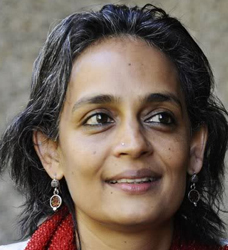 She was born to parents Mary Roy a well known social activist who won a landmark Supreme Court verdict that granted Christian women in Kerala the right to their parent's property and father a Bengali Hindutea planter. Arundhati's parents separated when she was small
She was born to parents Mary Roy a well known social activist who won a landmark Supreme Court verdict that granted Christian women in Kerala the right to their parent's property and father a Bengali Hindutea planter. Arundhati's parents separated when she was small he years following her success, she has turned to activism, writing 'The Cost of Living' a book comprising two essays 'The Greater Common Good'(1999) and 'The End of Imagination'(1998); the former against Indian Governments massive dam projects which displaced millions of poor people and the latter; its testing of Nuclear weapons. She has been an active participant in public demonstrations against the construction of the Sardar Sarovar Dam on the Narmada river in Western India and has donated a substantial amount around 1.5million rupees, equivalent to her Booker Prize money, for the cause. She was even arrested along with other protestors for campaigning for the cause. 'Power Politics' her latest book published, takes on Enron the power corporation based in Houston trying to take over Maharashtra's energy sector. She has also spoken on and published several articles such as 'Promotion of equal rights' supporting equal rights for lower caste in India and 'War on Terrorism' (2001)against the Iraq war. Roy was awarded the Sydney Peace Prize in May 2004 for her work in social campaigns and her advocacy of non-violence. In January 2006 she was awarded the Sahitya Akademi award for her collection of essays on contemporary issues, The Algebra of Infinite Justice, but she declined to accept it.
MEHER MISTRY
ANJOLIE ELA MENON (DEV)
Welcome to the official Home Page of Anjolie Ela Menon
Press Release – Anjolie Ela Menon in San Francisco
The Asian Art Museum in San Francisco is one of the great Museums of the world. Indian artist Anjolie Ela Menon has been honoured with a six month solo at the Museum featuring her large triptych entitled Yatra – the exhibition opens on the 20th of May 2006.

This large work is inspired by the annual march of the Kavadiyas to the holy sites on the Ganga, where they gather in their millions each year during Shravan to collect water in pots to carry back to their village shrines for the worship of Shiva, sometimes walking barefoot 500 miles. A simultaneous exhibition of her work will be held at Gallery Artsindia, Palo Alto.
Menon who has been awarded the Padmashree is amongst the most important artists in the current scene in contemporary Indian art.
Quotes
Isana Murti writes in the portfolio published by Lalit Kala Akademi in 2006 ‘Anjolie Ela Menon, one of India’s best known artists’ had her first solo exhibition in 1958 where renowned critic Richard Barthlomew wrote, ‘I have no doubt that before long this gifted young woman will be joining the ranks of our very best painters’. These words have been truly prophetic and Menon’s trajectory over the last five decades is testimony to the evolution of an artist who has defied easy classification and who has broken fresh ground with confident panache.
Ranjit Hoskote writes ‘Menon has always prized what she terms the ‘aura’ of the paintings. This aura has been achieved in her finest works.’
Gayatri Sinha writes ‘Her panoply of figures, as they appear, signify non-space and non-time…Like a wanton fabulist, Menon brings accretion, division, conjunction to play upon the conventional image…. Menon insists on the location of the past in the present. Her painting argues against cultural amnesia.’
“If this exhibition brings some honour to India and creates an awareness about Indian Contemporary Art it will be an important milestone for me”-Menon.
ANAND MAHINDRA EX LAWRENCIAN

ANAND MAHINDRA EX LAWRNCIAN
Anand Mahindra is the Vice Chairman and Managing Director of one of India’s largest companies, Mahindra & Mahindra. He now resides in his home town Mumbai.
Anand graduated from Harvard College, Cambridge, Massachusetts, Magna cum Laude (High Honours).[1] Following completion of his MBA from Harvard Business School, Boston, Massachusetts in 1981.
Mahindra returned to India and joined Mahindra Ugine Steel Company (MUSCO) where he became President and Deputy Managing Director in 1989. During this time he initiated the Mahindra Group’s diversification into the new business areas of real estate development and hospitality. In 1991, he was appointed Deputy MD of Mahindra & Mahindra Ltd. He became the Managing Director in 1997 and took on the additional responsibility of Vice Chairman in 2003.
Mahindra was a co-promoter of Kotak Mahindra Finance Ltd., which in 2003 was converted into a bank[2]. Kotak Mahindra Bank is one of the foremost private sector banks today. Also Tech Mahindra, a IT part of the M&M group is one of the fastest growing in the industry. Tech Mahindra has recently acquired Satyam Computer Services Ltd. and renamed it Mahindra Satyam.
Under Anand Mahindra, the company launched India’s best loved SUV, the Scorpio, which today has gone global.
He has recently been ranked amongst the most influential men & women in Mumbai
Mahindra is the co-founder of the Harvard Business School Association of India, an association dedicated to the promotion of professional management in India. The association has grown substantially over the years.
He is the co-chair at the World Economic Forum at Davos.
He is Past President 2003-04 of the Confederation of Indian Industry and has also been President of the Automotive Research Association of India (ARAI).
Mahindra is a Director of The National Stock Exchange of India appointed under the "Public Representatives" category.
He takes a keen interest in matters related to education and apart from being a Trustee of the K.C. Mahindra Education Trust, which provides scholarships to students, he is also on the Board of Governors of the Mahindra United World College of India.
He is the Chairman of National Safety Council of India.
Mahindra is the Founder Chairman of the Mumbai Festival[8], which was launched in January 2005. The event was the first comprehensive festival to celebrate the rich cultural diversity of the city.
He is the Co-Chairman of the International Council of the Asia Society, New York.
Awards
- 'Knight of the Order of Merit' by the President of the French Republic
- Rajiv Gandhi Award 2004 for outstanding contribution in the business field
- 2005 Leadership Award from the American India Foundation for his, and the Mahindra Group's commitment to corporate social responsibility
- Person of the Year 2005 from Auto Monitor
- CNBC Asia Business Leader Award for the year 2006
- The Most Inspiring Corporate Leader of the Year 2007 from NDTV Profit.
- Named Business Leader of the Year by the Economic Times Awards 2008-2009
Monday, August 31, 2009

THE OLD BUS AND THE NEW BUS..
PREVIOUSLY WE WOULD WALK TO OOTY,
AND WALK BACK.
FOR SOME OF US
WAS A PRETTY LONG WALK, BUT I GUESS
NO PLEASURE GAINED WITH WORKING FOR IT,
IF WE WANTED TO ENJOY A FEW HOURS
OUT OF SCHOOL ON SPECIAL OCCASION,
THEN THE LEGS WERE A GIRLS BEST FRIEND
NOW YOU TAKE A BUS RIDE IN THE SCHOOL BUS.
THE OLD BELL OF THE CLOCK TOWER
Sunday, August 30, 2009
pictures


THE BOY SCHOOL, THE GIRL SCHOOL THE PREP SCHOOL
| School Overview | ||
School Campus
The school stands on its own estate of over 700 acres and is situated in the village of Lovedale, about six kilometres from Ootacamund. Lovedale is about 7200 feet above mean sea level with a temperate climate throughout the year. The school is divided into four schools. Classes four to six live, eat and study together. Classes nine to twelve are in the senior school. All girls from Class seven onward are housed separately in the girls’ hostel although they attend class alongside the boys. Each of the four schools has its own dining hall and catering staff, so the pupils take all meals at their own school. The school has its own modern hospital, with fifty-five beds, governed by a Resident Medical officer and a trained staff. The school library has a stock of 10,000 titles and is computerized.
Sports
From January to June, cricket and hockey are the major sports. Through the late months of the year, football and athletics are popular. From mid March onward, when the weather is warm, the swimming pool is the main scene of activity. Apart from these events, the school has fine stable for riding and facilities netball volleyball, gymnastics, tennis, table tennis and badminton. Spread among the lovely hills of the Nilgiris, the school is richly supplied with courses for cross-country running. The Nilgiris derive their name from ‘blue mountains’.
Affiliation
The school is affiliated to the Central Board of Secondary Education, New Delhi. Students are prepared for the CBSE examinations at the end of Class X and XII. At the +2 level the students can specialize in Commerce, Humanities or the Sciences. The school is a permanent member of the Round Square and Indian Public Schools Conference. The school has an active International Exchange Programme.
A MEMORIAL TO HENRY LAWRENCE

Sir Henry Montgomery Lawrence Memorial
Monument of Henry Montgomery Lawrence at St Pauls Cathedral, Calcutta
Sir Henry Montgomery Lawrence Memorial
small photo
Photo by John Kendall
In memory of the great and good
Sir Henry Montgomery Lawrence K.C.B.
Christian statesman, philanthropist and soldier
Who in the Punjab, Rajputana and Oudh
Taught how kindly subject races should be ruled
Who first in India, founded hill asylums for British soldiers children
and who fell in the memorable defence of Lucknow
4th July 1857
Beloved and mourned by natives and Europeans
As the monument he would have most desired
the community of Calcutta and Bengal,
Joined with that of Upper India in founding
a "Henry Lawrence Memorial Asylum for Soldiers" Children"
at Murree, in the hills of the Pubjab;
They also erect this tablet in the Cathedral
To keep among them his memory and example.
information from the net
THE BEAUTIFUL NILGIRIS
History
The history of Nilgiris dates back to eleventh and twelfth century. The Nilgiris was first mentioned in Silapathikaram. The Nilgiris was part of the Kingdoms ruled by most of the rulers of South India viz. the Cheras, the Cholas, the Pandiyas, the Rashtrakutas, the Ganges, the Pallavas, Kadambas and the Hoysalas. The illustrious king of Hoysalas Vishnuvardhana (A.D. 1111-1141) had conquered Nilgiris and turned the Nila mountains into a city.
Modern Period
The Nilgiris was part of the Vijayanagar Kingdom from 1336 to 1565. After its fall in 1565 the rulers of Mysore gained control over the Nilgiris. Later it came under the rule of Hyder Ali and Tipu Sultan (1760 to 1799). The Nilgiris was ceded to the East India Company in 1799 by a Treaty of Srirangapattanam. However this beautiful mountainous region was unknown to British until 1818.
It was John Sullivan, an Englishman and Collector of Coimbatore, who was destined to have greater cultural impact on the Nilgiri hills than any other single person, Indian or European. He had a strong love of Nature and propensity for Agriculture and Gardening. He was the first European official to build a house and settle there.
He introduced a number of old varieties of plants from Europe and South Africa which form part of the Nilgiris flora today. He is responsible for developing the Nilgiris and Udhagamandalm in particular.
The Ootacamund is well brought out by Lord Lytton, Governor General of India who visited the hills in September 1877. He loved the rainy and muddy road in Ootacamund.
Saturday, August 29, 2009
Wednesday, August 26, 2009
150 YEARS CLEBRATIONS BY IAN DORAN
THE NILGIRIS LOVEDALE OOTY .AND THE TODAS
History
The history of Nilgiris dates back to eleventh and twelfth century. The Nilgiris was first mentioned in Silapathikaram. The Nilgiris was part of the Kingdoms ruled by most of the rulers of South India viz. the Cheras, the Cholas, the Pandiyas, the Rashtrakutas, the Ganges, the Pallavas, Kadambas and the Hoysalas. The illustrious king of Hoysalas Vishnuvardhana (A.D. 1111-1141) had conquered Nilgiris and turned the Nila mountains into a city.
Modern Period
The Nilgiris was part of the Vijayanagar Kingdom from 1336 to 1565. After its fall in 1565 the rulers of Mysore gained control over the Nilgiris. Later it came under the rule of Hyder Ali and Tipu Sultan (1760 to 1799). The Nilgiris was ceded to the East India Company in 1799 by a Treaty of Srirangapattanam. However this beautiful mountainous region was unknown to British until 1818.
It was John Sullivan, an Englishman and Collector of Coimbatore, who was destined to have greater cultural impact on the Nilgiri hills than any other single person, Indian or European. He had a strong love of Nature and propensity for Agriculture and Gardening. He was the first European official to build a house and settle there.
He introduced a number of old varieties of plants from Europe and South Africa which form part of the Nilgiris flora today. He is responsible for developing the Nilgiris and Udhagamandalm in particular.
The Ootacamund is well brought out by Lord Lytton, Governor General of India who visited the hills in September 1877. He loved the rainy and muddy road in Ootacamund.
Route: Mettupalayam - Coonoor – Ooty
The Nilgiri Railway
 This Nilgiri Rail system is unique as it is the steepest one in Asia. It is a 46 Km long and runs on 1000 mm gauge railway connecting Mettupalayam to Ooty. Both towns are in the state of Tamil Nadu.
This Nilgiri Rail system is unique as it is the steepest one in Asia. It is a 46 Km long and runs on 1000 mm gauge railway connecting Mettupalayam to Ooty. Both towns are in the state of Tamil Nadu.
It covers a distance of 46 km in around 5 hours. It is interesting to note that the engine pushes the train from behind when ascending the hills and is in front, while going downhill so that the train does not run amuck. This is a truly amazing journey that takes tourists from a height of 1069 feet to 7228 feet.
The train itself is a charming blue and cream with wooden coaches and large windows. It is hauled up hills by steam engines, designed and built by the Swiss Locomotive Works. Twelve of such locomotive engines survive even today.
The journey itself from Mettupalayam to Ooty is full of scenic beauty enroute. The train passes amidst tranquil and serene views of Coonoor, Wellington, Lovedale to finally reach Ootacamund. It covers a total distance of 116 km and crosses 250 bridges and 16 tunnels.
History
It was in 1854, that the first plans were made to build a mountain Railway from Mettupalaiyam to the Nilgiri Hills. But it took the decision-makers 45 years to cut through the bureaucratic red tape and complete the construction and installation of the line.
The line was completed and opened for traffic in June 1899. It was operated first by the Madras Railway under an agreement with the Government.
The Madras Railway Company continued to manage this railway line on behalf of the government for a long time until the South Indian Railway company purchased it. The line was extended to Ootacamund from Coonoor some time in 1908 on the same gauge over a distance of 11 and 3/4 miles at a cost of Rs. 24,40,000.
I HAVE MANY SWEET MEMORIES, OF THIS WONDERFUL TOY TRAIN. WHICH TOOK ME TO SCHOOL AND BACK HOME FOR HOLIDAYS.I WAS A SCARED LITTLE GIRL ON MY FIRST TRIP AND PRAYED WHILE THE TRAIN WAS GOING THROUGH TUNNELS AND CROSSING HIGH NARROW BRIDGES,I PRAYED THAT IT WOULD REACH MY DESTINATION, SCARED SILLY LITTLE GIRL. BUT LATER WHILE GOING HOME IT WAS A PLEASURE ,TRIP WHAT WITH A TRAIN FULL OF KIDS SCREAMING THROUGH TUNNELS , HOLDING SMALL COLORFUL PROPELLERS MADE OF WOOD IN OUR HANDS, . THE LOVEDALE MONKEYS WERE LOOSE. THAT IS WHAT I HEARD SOME ELDERS SAY .
THOSE WERE THE DAYS GONE FOR EVER,BUT ETCHED IN MEMORY
CLUELESSNAN
Todas, an ancient people living in the Nilgiris, are according to anthropologists, an off-shoot of the ‘Lost Tribe’ of Israel. Some of their customs and practices are amazing and often shocking. An insight into their fascinating lifestyle.
The Neilghrrey, the Nilgiris or the Blue Hills of Tamil Nadu boast of vast tea and coffee estates, huge forests of teak, rosewood and eucalyptus that give the hils their aura of blue. And, most important of all, they are home to the Todas, an ancient people who in dress and stature strongly resemble characters from the Old Testament.
Prince peter of Greece, an anthropologist, after a careful study of these people, concluded that there was strong likelihood that they were an off-shoot of the “Lost Tribe” of Israel.
The Toda men, over six feet in height, are well proportioned with tousled hair and beards. Well-shaped, high-bridged aquiline noses, natural hauteur and an independent spirit show why they work for no one. As a matter of fact, they are the lords with people working for them. Their athletic physique, remarkable stamina and endurance make them magnificent men. The women, however, are small in stature and wear cork-screw ringlets as a mode of hair arrangement.
The forced interaction with civilisation has caused a lot of changes in the lifestyle of the Todas. The Todas used to be a pastoral people but are now increasingly venturing into agriculture and other occupations. They used to be strict vegetarians but some can be now be seen eating non-vegetarian food. Although many Toda have abandoned their traditional distinctive huts for concrete houses,[7] a movement is now afoot to build tradition barrel-vaulted huts and during the last decade forty new huts have been built and many Toda sacred dairies renovated.
My first visit was a class outing to a Toda hamlet, very near by Lovedale station.
The Toda people were very gracious and allowed us to romp around and have a look at their style of living, we had to creep in on our knees to get a peep into their wonderful home so small and comfy and warm. they were good enough to entertain us with their singing, , the song just one tone with sound it was out of this world. I never heard any thing like that before. I went back to school in wonderment, it was an experience never forgotten, as the poet said, "he music in my heart i bore, long after it was heard no more".
I have not seen a Toda in ages, but I have read their are changes to their culture, and their home stead, I guess we have to accept change.
Nothing is permanent, this too shall pass
CLUELESSNAN
